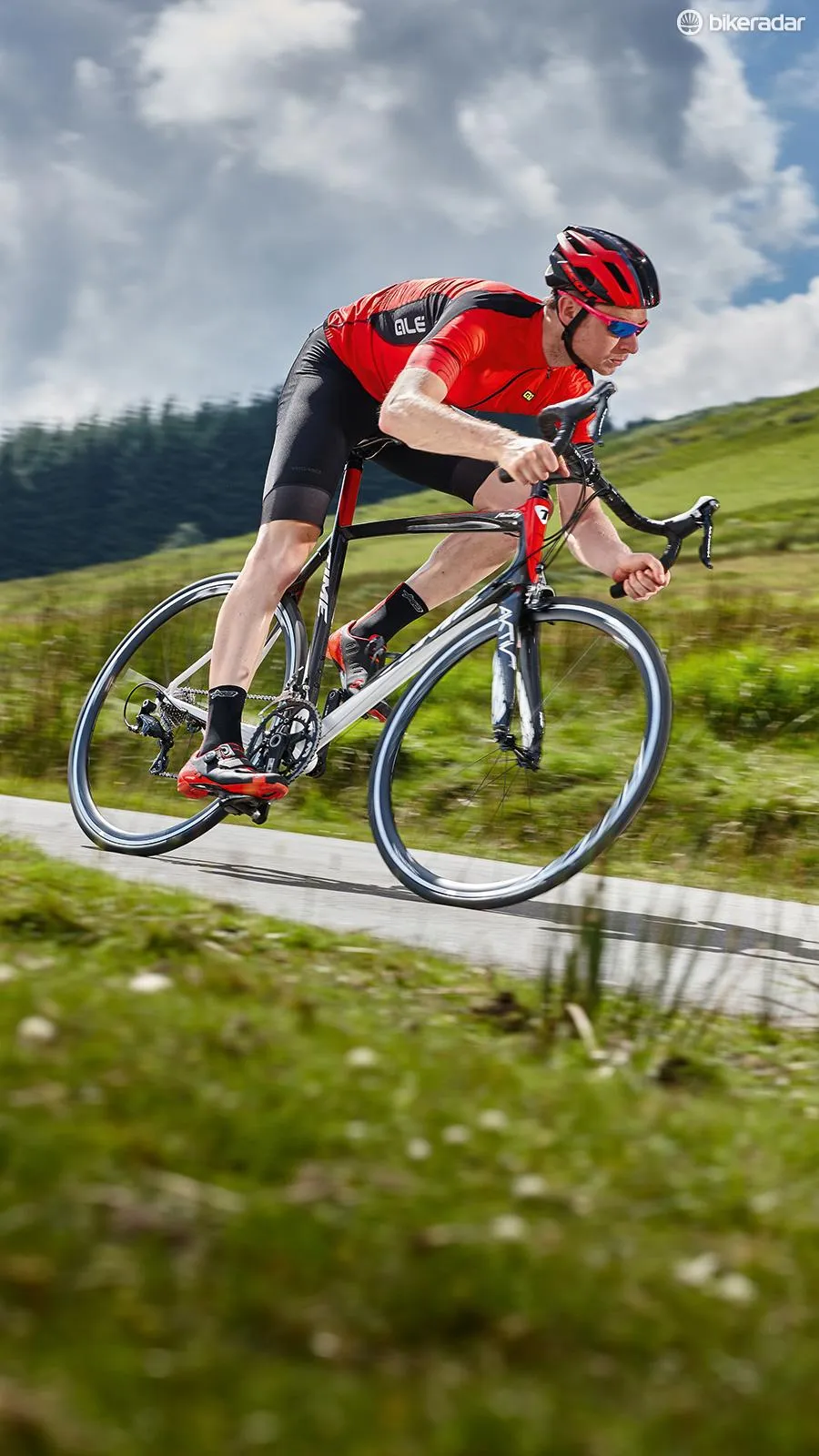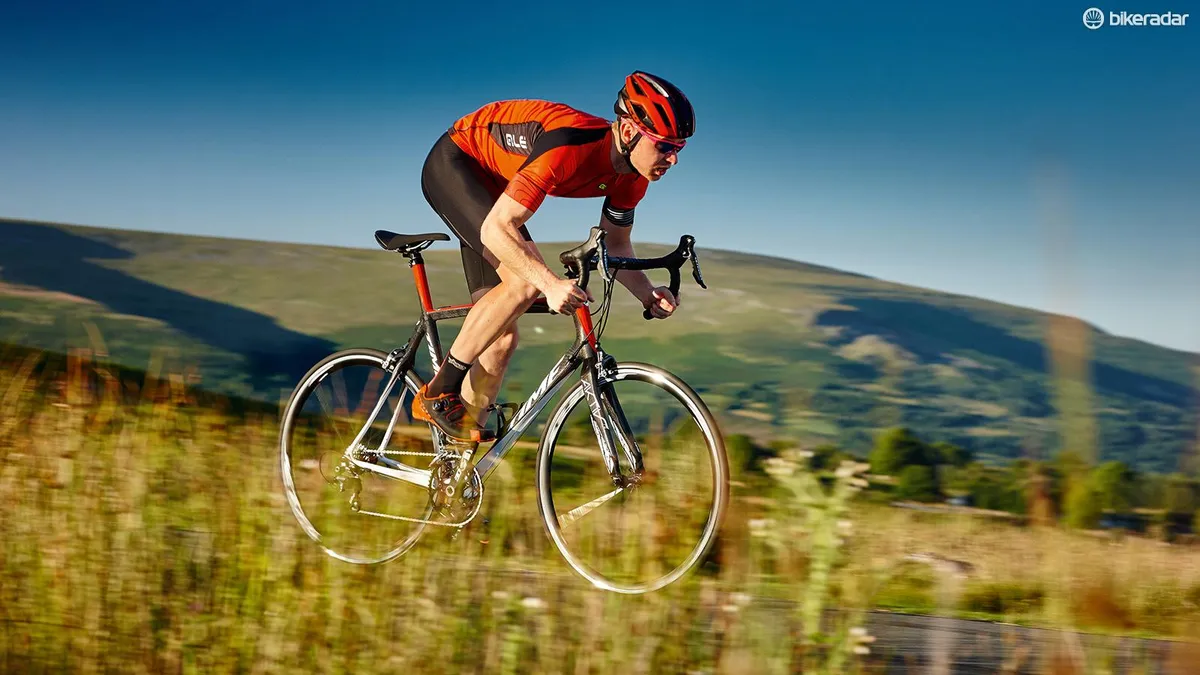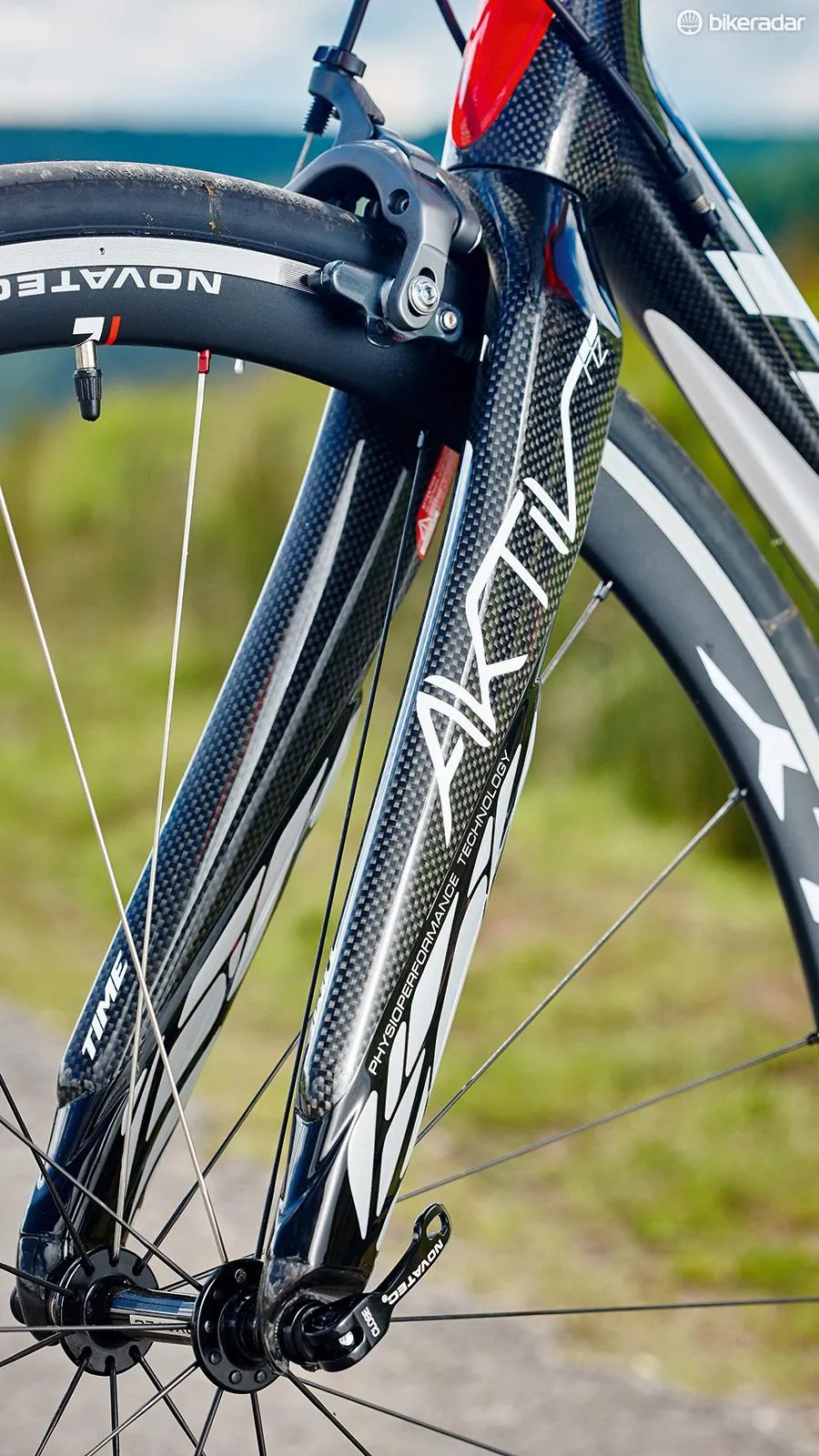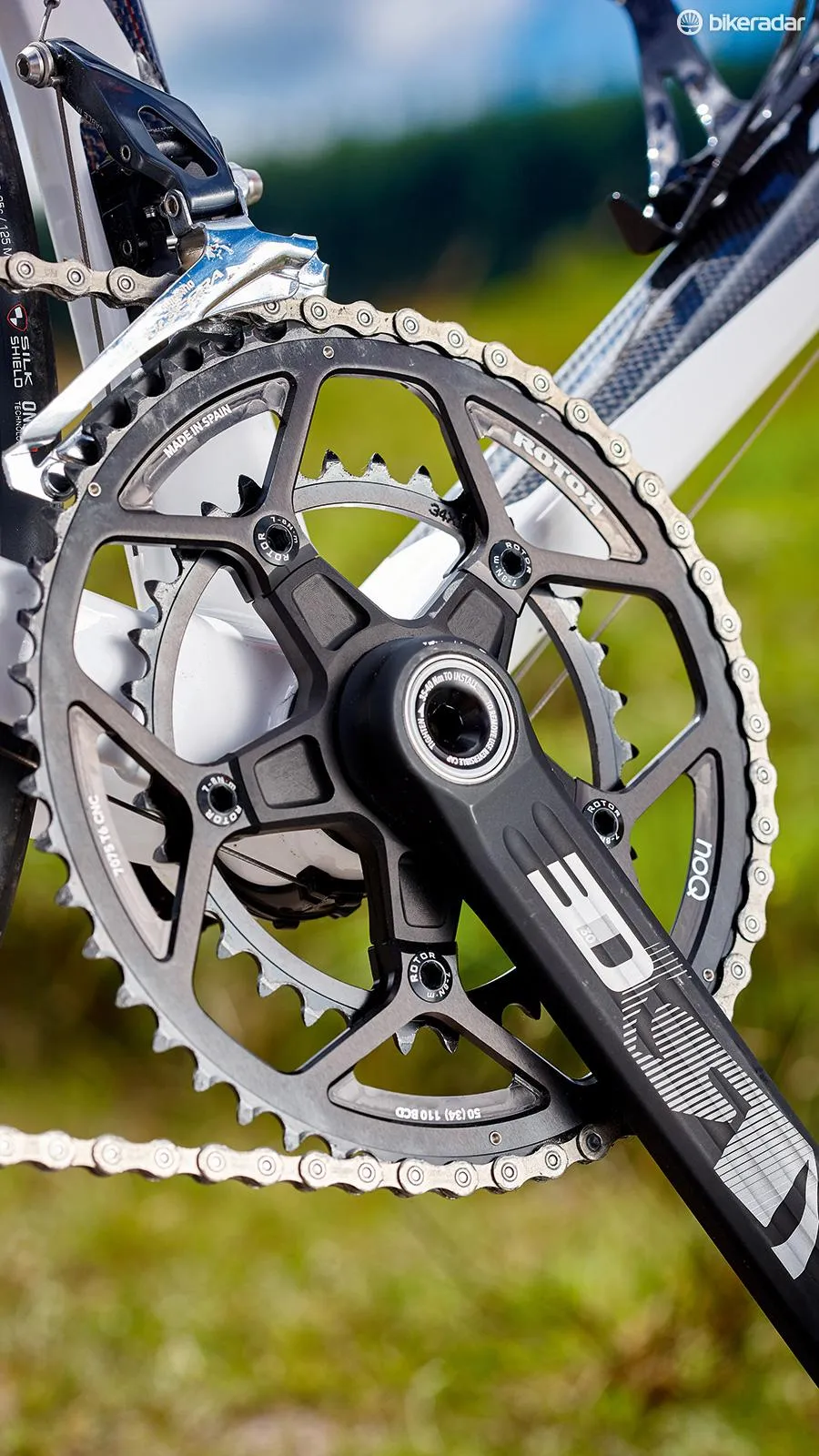Time has always done things a little differently. Instead of using a selection of off-the-peg or custom-spec pre-impregnated carbon fibre sheets — like pretty much the rest of the bike industry — Time weaves its own strands of fibre in its facility near Lyon in France. This lets it blend fibre to its own specification and add vibration-damping elements such as Vectran, a multi-filament yarn spun from a liquid crystal polymer.
As a result, Time bikes have a unique ride feel, blending firmness with a layer of smoothness that gives models like the Fluidity a level of comfort that’s both unexpected and most welcome. The downside of this prolonged and labour-intensive production process is the price.
The kit is just about as good as it gets, with Fizik’s carbon R1 bar, stiff aluminium stem and Aliante saddle, whose swoopy lines are well suited to the Time
The Fluidity frameset retails at £2,150 with a standard fork, or a hefty £2,950 if you plump for the version we tested, with Time’s Aktiv fork, giving you little change from three grand. And that’s before you even start to build it into a complete bike…
The Aktiv fork is a big departure for Time. At first glance it looks like many other sculpted deep, aero-ish designs — but that’s not the reason for the depth of the legs. Above the dropout there is a section of carbon designed to act like a leaf spring, with a ‘Tuned Mass Damper’ bonded to it, all of which is hidden within the fork legs. The dampers absorb the biggest hits and reduce the intensity of other vibrations. They are specifically designed to dissipate vibrations in the 25-50hz range — those low-frequency-noise hits that lead to hand discomfort and increasing fatigue.
On the road the subtle smoothness of the front end found us looking for bad road surfaces to test the Fluidity to its fullest, going as far as venturing onto tracks and dirt roads to try to unsettle it. We came away impressed every time. The rear end does a pretty impressive job of keeping up with the front end’s smoothness, thanks to its Vectran-infused chainstays and seatstays.
With our XL test model’s 219mm head-tube and 580mm top-tube giving 615mm stack and a shortish 393mm reach, the Fluidity isn’t one for racers. The result may be a fairly upright riding position, but the bike itself is no slouch. A weight a tad over 7kg and a shortish wheelbase — 999mm — make it a responsive machine that you can hustle along.
On the climbs

It’s a good climber too, aided by that low overall weight and similarly light Novatec Jetfly wheels. The 1,435g tubeless-ready hoops are paired with Maxxis tubeless tyres, helping to overcome the very aggressive 11-25 cassette, which is a slightly strange choice on what is an endurance bike.
You do have to adjust to the slightly upright riding position when you’re descending. We always wanted to get down into the drops at a moment’s notice to really exploit the extra speed you can extract from a bike that covers even very rutted road surfaces so smoothly.
The kit is just about as good as it gets, with Fizik’s carbon R1 bar, stiff aluminium stem and Aliante saddle, whose swoopy lines are well suited to the Time. The rock-solid Rotor chainset and the otherwise all-Shimano Ultegra drivetrain is as consistent as you’d expect, as are the excellent Ultegra brakes. Our only niggle is that for over four grand we’d hope for the next rung up Shimano’s groupset ladder.
Time’s Fluidity — in its Aktiv fork guise — is a genuine superbike. Not in the same way as bikes that’ll win Grand Tours — think more Maserati GranTurismo than Ferrari F1 — but for most of us that’s a good thing.




